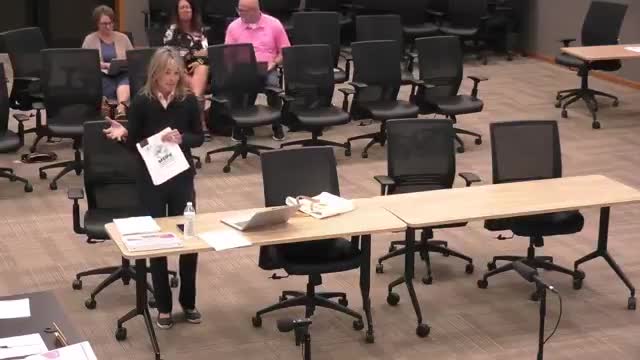Saint Joseph School District seeks feedback on comprehensive school improvement plan
July 01, 2025 | St. Joseph, School Districts, Missouri
This article was created by AI summarizing key points discussed. AI makes mistakes, so for full details and context, please refer to the video of the full meeting. Please report any errors so we can fix them. Report an error »

In a recent work session held by the St. Joseph School District, educators and board members gathered to discuss the critical components of their Comprehensive School Improvement Plan (CSIP). The atmosphere was charged with a sense of urgency as they navigated the complexities of a 134-page document provided by the Department of Elementary and Secondary Education (DESE), which outlines the standards and indicators necessary for district accreditation.
The meeting, led by district officials, emphasized the importance of tailoring the improvement plan to meet the unique challenges faced by the St. Joseph School District. Central to this effort is the development of a "portrait of a graduate," a concept that encapsulates the desired dispositions and skills students should possess upon graduation. This initiative aims to align the district's mission, vision, and values with community expectations, ensuring that educational outcomes reflect local needs.
Participants were encouraged to engage with the materials provided, including an implementation guide and a verification scoring guide, which will help assess the district's progress in meeting DESE's expectations. A significant focus was placed on the leadership indicators, particularly the "L3" standard, which emerged as a key area for continuous improvement. This standard is crucial, as it accounts for 30% of the district's annual performance report.
As the meeting progressed, officials highlighted the importance of evidence-based practices in demonstrating the effectiveness of their improvement strategies. The district is currently in a pivotal phase, with accreditation standards set to be evaluated based on performance data from the past few years. The urgency of the situation was underscored by the fact that the district has yet to achieve the 70% accreditation threshold, a goal that remains elusive for many districts across the state.
Looking ahead, the St. Joseph School District is committed to refining its approach to school improvement, ensuring that it not only meets state requirements but also fosters an environment conducive to student success. The collaborative efforts of educators, board members, and community stakeholders will be essential as they work towards achieving their accreditation goals and enhancing educational outcomes for all students.
The meeting, led by district officials, emphasized the importance of tailoring the improvement plan to meet the unique challenges faced by the St. Joseph School District. Central to this effort is the development of a "portrait of a graduate," a concept that encapsulates the desired dispositions and skills students should possess upon graduation. This initiative aims to align the district's mission, vision, and values with community expectations, ensuring that educational outcomes reflect local needs.
Participants were encouraged to engage with the materials provided, including an implementation guide and a verification scoring guide, which will help assess the district's progress in meeting DESE's expectations. A significant focus was placed on the leadership indicators, particularly the "L3" standard, which emerged as a key area for continuous improvement. This standard is crucial, as it accounts for 30% of the district's annual performance report.
As the meeting progressed, officials highlighted the importance of evidence-based practices in demonstrating the effectiveness of their improvement strategies. The district is currently in a pivotal phase, with accreditation standards set to be evaluated based on performance data from the past few years. The urgency of the situation was underscored by the fact that the district has yet to achieve the 70% accreditation threshold, a goal that remains elusive for many districts across the state.
Looking ahead, the St. Joseph School District is committed to refining its approach to school improvement, ensuring that it not only meets state requirements but also fosters an environment conducive to student success. The collaborative efforts of educators, board members, and community stakeholders will be essential as they work towards achieving their accreditation goals and enhancing educational outcomes for all students.
View full meeting
This article is based on a recent meeting—watch the full video and explore the complete transcript for deeper insights into the discussion.
View full meeting
